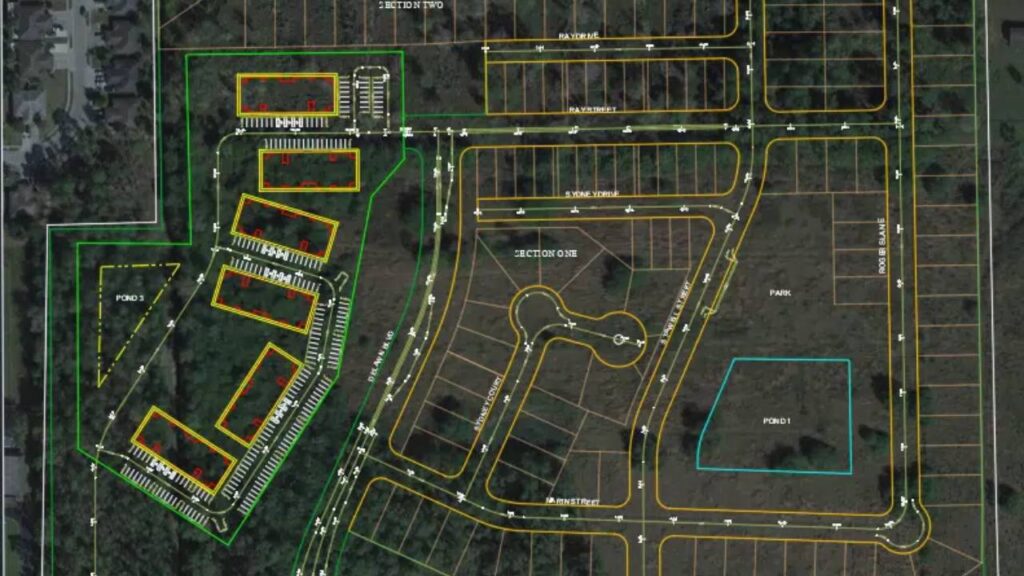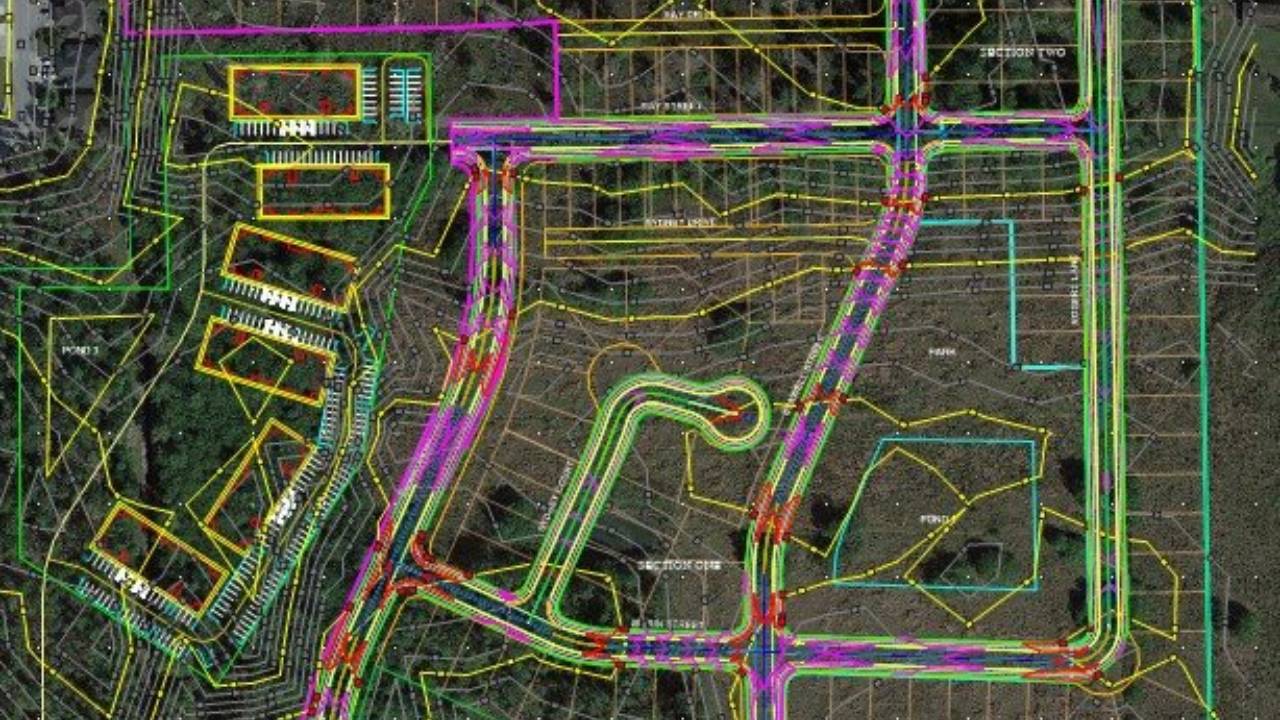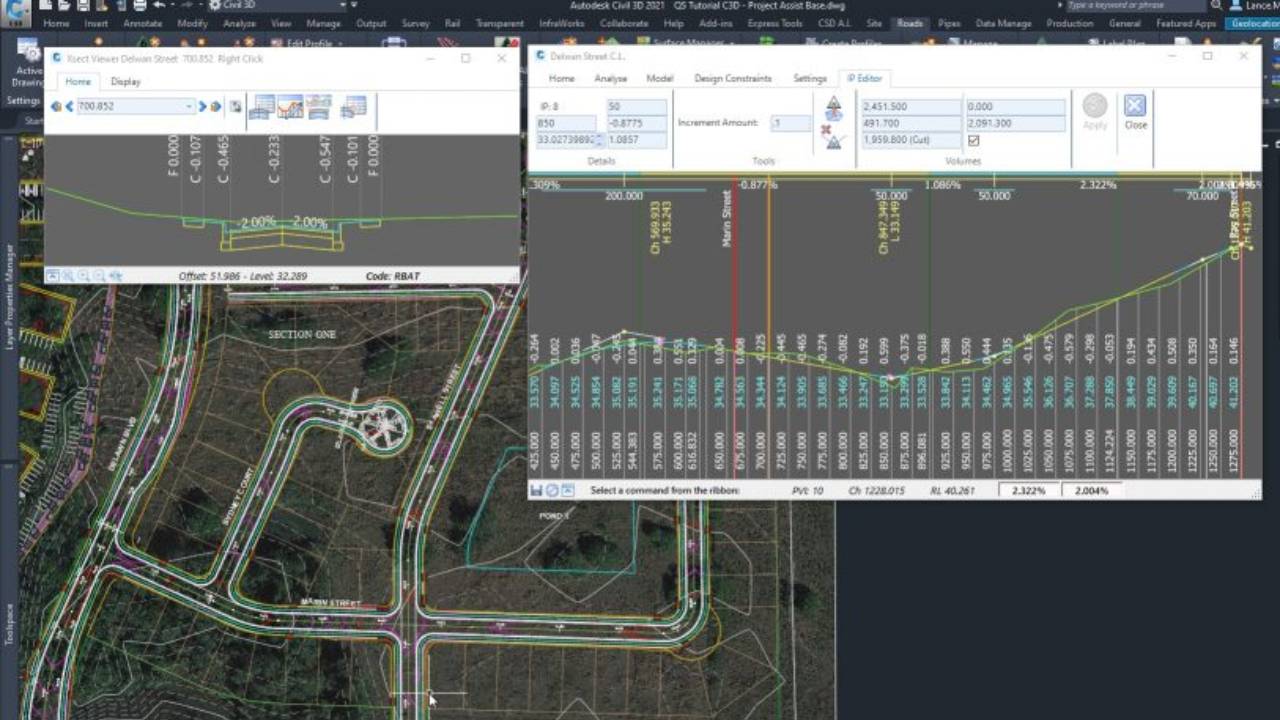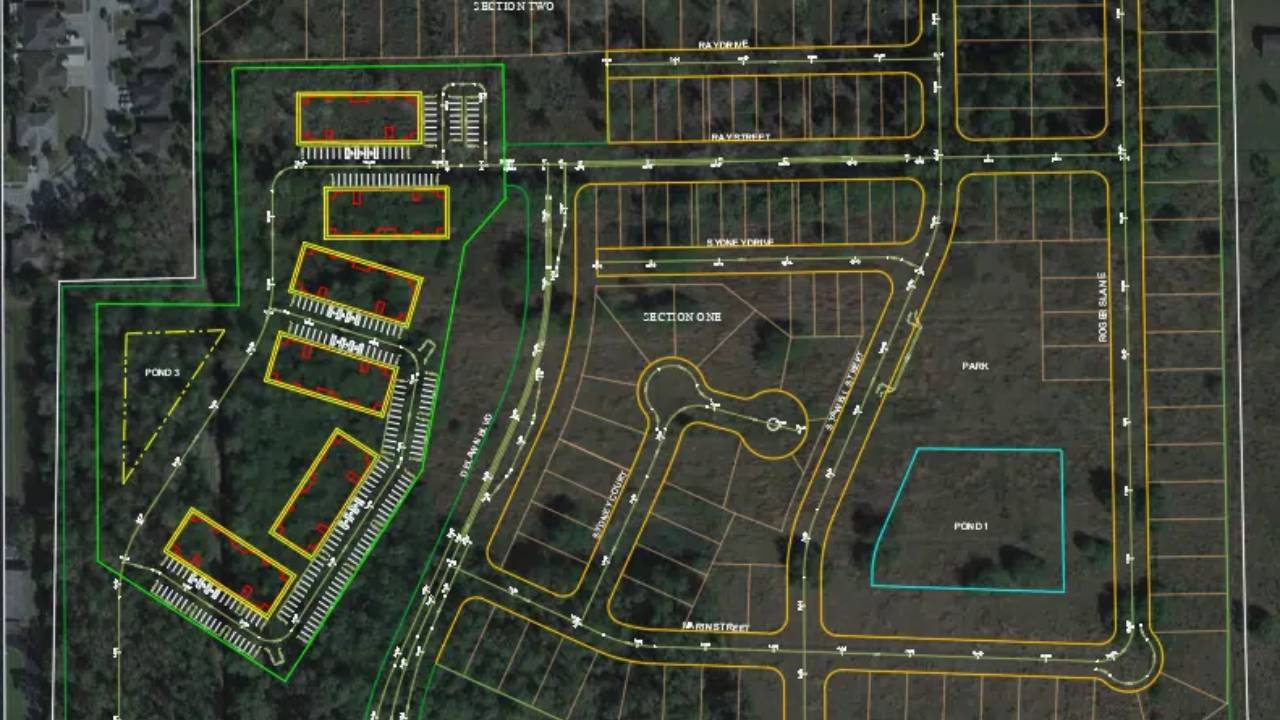Adding artificial intelligence focused on subdivision design allows designers to generate a road network design for a subdivision in minutes!
We consistently hear three key comments from senior management at civil engineering firms – most using Civil 3D
- The workflow process for subdivision design is complex and difficult to manage.
- We have difficulty hiring experience designers.
- It takes too long for junior designers to become productive.
Most are busy and backlogs are increasing. All understand that they need to optimize their workflows to increase productivity.
Project Assist is the first AI Tool for Subdivision Design
Civil Survey Applications’ Project Assist is the first AI tool to significantly increase the productivity of all staff involved in subdivision design. First introduced in 2021 it was trained using 100’s of end user support request and then optimized for the specific tasks associate with road network design.
Project Assist’s application in subdivision design primarily focuses on reducing the time taken to layout a subdivision road network. Traditionally, this process takes hours or even days. However, with AI, this time-consuming task is reduced to mere minutes. This drastic reduction in design time allows for a more agile response to project demands, enabling designers to iterate and refine their plans quickly.
The AI software is not just a tool for speed; it’s also a learning system that adapts to the designer’s style. It learns the design intent based on how the alignments are named, effectively learning the designer’s language. This feature allows for a more personalized and intuitive design experience, as Project Assist becomes more attuned to the designer’s preferences over time.
Project Assist is the first AI tool to significantly increase the productivity of all staff involved in subdivision design.
Project Assist uses AI to Understand Your Road Network Design Intent
Civil Site Design – an add-on to Civil 3D since 2007 – has revolutionized the design process with design automation. Project Assist takes this automation to the next level with AI.
Using an existing ground surface and alignments for road centerlines, turning lanes, bus bays, bull nose curbs and islands Project Assist will:
- Understand your design intent and provide you with a form for review and editing
- Build out your design assigning road templates with a best fit vertical design
- Add curb returns tied directly to the connecting roads
- Automatically design your more complex segments including turning lanes, widenings, cul-de-sacs, knuckles and islands.
Ask your senior designers how many hours it would take to generate an initial design for the road network shown in this subdivision.

Watch this brief video below to see Project Assist in action
Understanding Project Assist’s Workflow
You begin with an existing ground surface and then the designer:
- Create and name alignments for the road centerlines
- Create and name alignments for widenings, turning lanes and bus bays
- Create and name alignments for knuckles, parking stalls and islands
- Identify the location of all cul-de-sacs
Activate Project Assist and it’s AI engine will read all alignments and provide you with a form displaying the what it believes you want to do with each based on the alignment type you select.
When you confirm the alignment usage, another form is generated defining the actual workflow Project Assist proposes.
You can review each proposed action and make adjustments as required. As you make these changes, the AI will continuously learn your alignment naming convention.
Project Assist Detailed Design Workflow
It is in this form that you can fine tune your design intent:
- If you have a custom alignment for a cul-de-sac – you can define it here with the “is cul-de-sac” option.
- If you are defining the curb return for a parking lot you would create a separate string that allows users to independently edit the vertical and horizontal design and assign a curb return template.
Many subdivisions have standard cul-de-sac definitions which can be defined in the Project Assist settings. Cul-de-sacs can be added to a road by checking the Add cul-de-sac box. These can be updated or modified later using the cul-de-sac edit option within the core software.
Finally, you are able to define a default curb return radius that will be used throughout your project. Curb returns can be easily modified during the detailed design phase.
PDF Summary Report
Once confirmed – Project Assist will automatically build out your design and then generate a PDF file describing each step taken in the design along with links to videos that show exactly the actions taken – a great training tool for new users. and a quality assurance report for senior designers.
Project Assist Results – A Complete Preliminary Design in 5 Minutes
Below is the preliminary design that Project Assist generated for this subdivision in under 5 minutes.

Civil Site Design generates the vertical design of the entire road network with all curb returns dynamically updated as design changes are made.
It also provides an intuitive user interface allowing you to:
- View and edit the design profiles
- Examine and edit Cross Sections directly
- Generate your profiles directly when needed

Summary
Civil Site Design’s Project Assist revolutionizes the subdivision design process by:
- Analyzing your alignments
- Understanding your design intent based on the naming convention used and learning as you make adjustments
- Adding automation to the more complex processes such as widenings, bus bays, parking lots, knuckles and islands
- Allowing new designers to become productive quickly and easily share designs with senior designers
- In Civil 3D and Corridor EZ your existing production standards are maintained and your profiles, design surfaces, feature lines and corridors are automatically created
- With Civil Site Design for BricsCAD and AutoCAD, plan/profile sheets and cross-sections are created automatically
Adding artificial intelligence to civil design software allows designers to generate a road network design for a subdivision in minutes!
In the fast-paced, competitive world of today, speed is paramount, especially in the realm of subdivision design. The advent of Artificial Intelligence (AI) has revolutionized this field, offering a multitude of benefits that streamline the design process and enhance efficiency.
Project Assist is the key AI component of Civil Site Design and Corridor EZ– a first in the land development market for subdivision design.
Project Assist’s application in subdivision design primarily focuses on reducing the time taken to layout a subdivision road network. Traditionally, this process could take hours or even days, a significant time investment that could delay project timelines. However, with AI, this time-consuming task is reduced to mere minutes. This drastic reduction in design time allows for a more agile response to project demands, enabling designers to iterate and refine their plans quickly.
The AI software is not just a tool for speed; it’s also a learning system that adapts to the designer’s style. It learns the design intent based on how the alignments are named, effectively learning the designer’s language. This feature allows for a more personalized and intuitive design experience, as the AI becomes more attuned to the designer’s preferences over time.
Moreover, the AI system is designed to learn from corrections made by the designer. Each correction serves as a learning opportunity for the AI, allowing it to refine its understanding of the designer’s intent and improve its future predictions. This continuous learning process ensures that the AI system becomes more accurate and efficient over time, further reducing design time and increasing productivity.
In conclusion, the integration of AI in subdivision design offers significant benefits. It not only accelerates the design process but also provides a personalized, intuitive design experience that improves over time. By reducing design time and enhancing efficiency, AI is set to transform subdivision design, making it more responsive and adaptable to the ever-changing demands of the modern world.
Project Assist is the first AI tool to significantly increase the productivity of all staff involved in subdivision design.
Recent Posts
Tags





